BEYOND THE GIZA PYRAMID OF KEMET
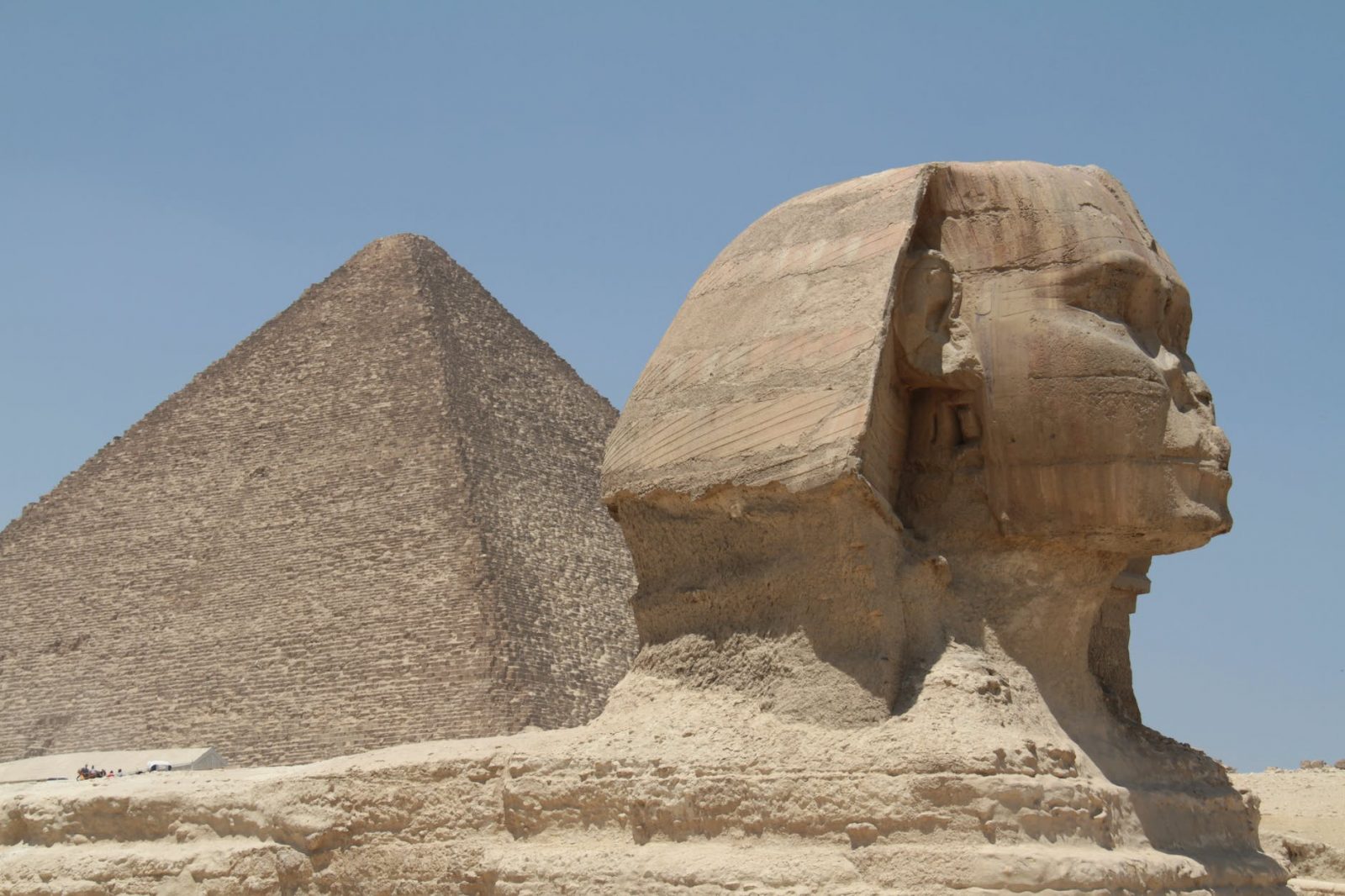
Dr. Bhengu is an Independent Researcher on Afrikan philosophy, Afrikology…
Published in loving memory of Dr Mfuniselwa J. Bhengu
Introduction
Was there an advanced prehistoric civilisation in ancient Egypt?; Who were the people who built the great pyramids?; Who carved the Great Sphinx?;
What was Atlantis?
In his work, Plato recounts his elder Solon’s story of an Egyptian priest who tells him about the great Atlantean empire. He describes Atlantis as an island that had rule over Lybia, Europe, Egypt, and Tyrrhenia (Italy).
Atlantis is described as a utopia where advanced beings dwell and live a moral life. As in any great empire after them, the Atlanteans become corrupt and wage wars. They go to war with Athens and lose. The Atlantean empire is destroyed and sinks beneath the ocean floor.
It is quoted in Critias that “For which reason the sea in those parts is impassable and impenetrable, because there is a shoal of mud in the way; and this was caused by the subsidence of the island.”
Plato tells us that the destruction of Atlantis happened 9000 years before the Christian era.
Another Greek philosopher of similar era, Herodotus explains that near a salt hill is a mountain named atlas and that this salt hill is at a distance of twenty days from the Garmantians.
In her work Anthropogenesis, Helena Blavatsky commonly referred to as Madame Blavatsky writes about how the Hindu Puranas also describe continents and islands far away from Western Africa thus describing the once thriving Atlantis.
Mainstream academia believes that Plato’s story was simply a fable or allegory that conveyed the need for a morally and pure political utopia. To the scholars the idea of Atlantis was simply an idealistic conception of an advanced society.
In Plato’s writings it can be truthfully seen that he makes no statement saying or hinting that the story of Atlantis is merely a well concocted story.
In his 1882 book, “Atlantis, the Antediluvian World,” the writer Ignatius Donnelly, argued that the accomplishments of the ancient world (such as metallurgy, language, agriculture, etc) must have been handed down by an earlier advanced civilization, as the Egyptian ancients weren’t sophisticated enough to develop these advances on their own.

There once existed in the Atlantic Ocean, opposite the mouth of the Mediterranean sea, a large island given, as was once argued by Plato, is not a fable, but a veritable history. It was the region where man first rose from a state of barbarism to civilisation. It was a populous and mighty nation, along the overflowing shores of the Gulf of Mexico, the Missippi river, the Amazon, the Pacific coast of South America, the Mediterranean, the west coast of Europe and Africa, the Baltic, the Black sea, and the Caspian, were populated by civilised nations.
Theopompus as quoted by Donnelly, tells us that the people who inhabited Atlantis were Meropes, the people of Merou. Malvern van Wyk Smith (The first Ethiopians, 2009; 236 and 262) also talks about Meroe. Talking about the first Ethiopians he said: ‘Meroe, their final capital between the third century BCE and fourth century CE, far was to remain part of the European fabulous imagination during medieval and Renaissance times. The ‘Island of Meroe’ was a standard feature of a Nile. He further says ‘Meroe was an African civilisation, firmly based on African soil, and developed by an African population…The Meroitic Kingdom achieved its own civilisation and influenced the development of ideas and civilisation in Africa. It may have been brought to its end in the fourth century CE by the rising power of Aksum. In short, very clearly, this island of Meroe was/is in Africa.
Plato tells us, that part of the African continent nearest to the site of Atlantis we find a chain of mountains, known from the most ancient times as the Atlas mountains. How come do we find this in the most north-western corner of Africa? And how does it happen that in the time of Herodotus there dwelt near this mountain-chain a people called the Atlanteans.
The mythologies of Egypt and Peru represented the original religion of Atlantis, which was sun-worship.
The oldest colony formed by the Atlanteans was probably in Egypt, whose civilisation was a reproduction of that of the Atlantic island. The Atlantis perished in a terrible convulsion of nature, a true tsunami, in which the whole island was submerged by the ocean, with nearly all its inhabitants. A few persons escaped in ships and on rafts, and carried to the nations east and west the tidings of the appalling catastrophe, which has survived to our own time in the Flood and Deluge legends of the different nations of the old and new worlds.
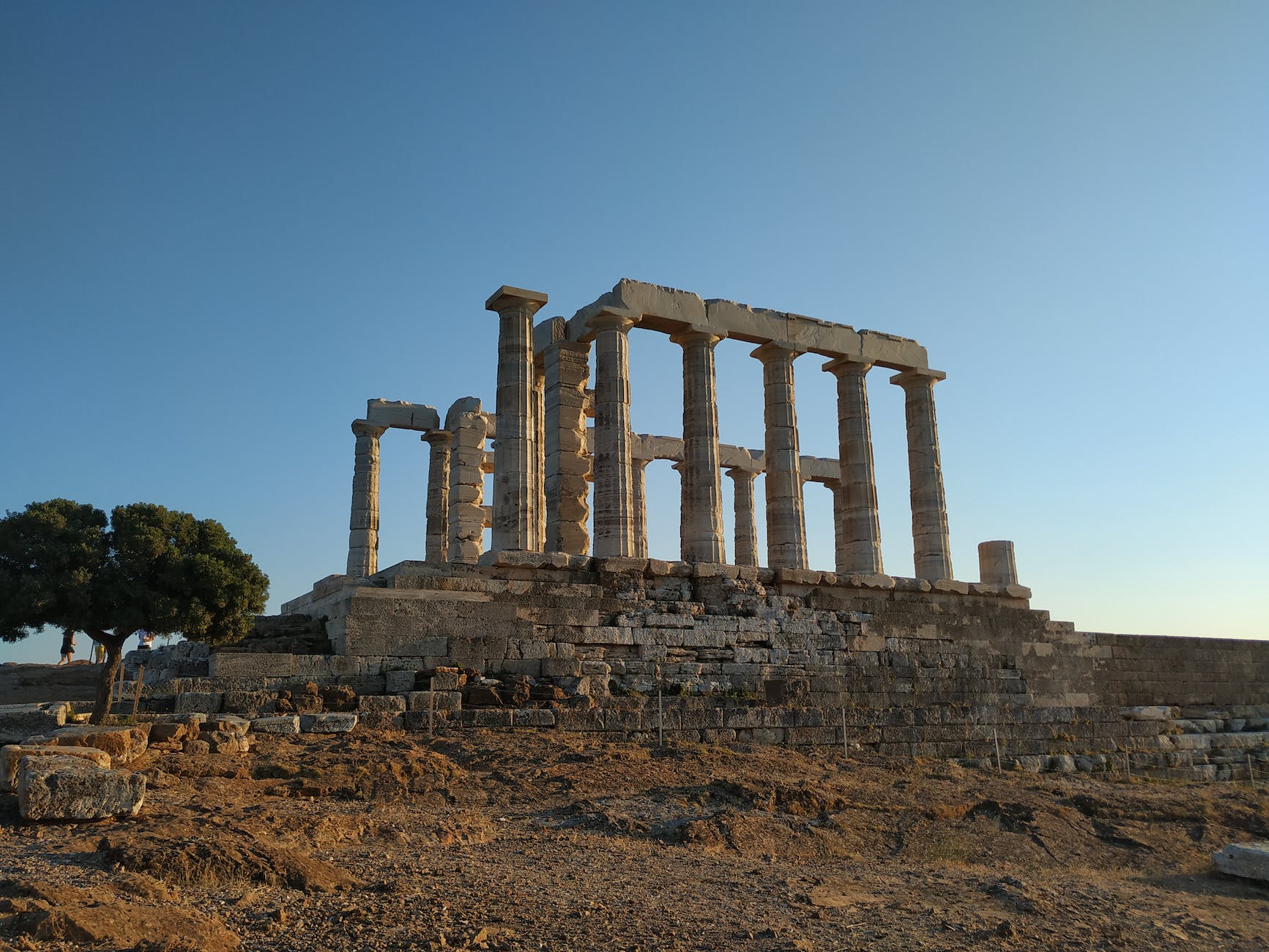
We find also that in the Phoenician legends, mention is made of Poseidon, founder and king of Atlantis. Egypt as a kingdom was given to god Taaut, who had invented the alphabets. The Egyptians called him Thoth , and he was represented among them as “the god of letters, the clerk of the underworld”, bearing a tablet, pen and palm-branch. This shows the relations of Egyptian civilisation to both Atlantis and the Phoenicians.
The age of this physical world is not linear, but travels in repetitive cycles. The Mesopotamian, along with the Mayan, Aztec, Egyptian, Greek, and Hebrew cultures all referred to higher times and declining ages. The Greek called the cycle “The Great Year”. The ancient Indian yoga culture called it the “Yoga” cycles. Through these ages mankind has again and again lost and gained knowledge of the physical laws governing it. But, according Donnelly, the Atlantis was in the late bronze age.
Atlantis and Egypt
According to Plato as quoted by Donnelly, at the head of the Egyptian Delta, where the river Nile divides, there is a certain district which is called the district of Sais, and the great city of the district is also called Sais, and is the city from which sprang Amasis the king. The citizens there have a deity who is their foundress. She is called in the Egyptian tongue Neith, which is asserted by them to be the same whom the Greeks called Athene.
This island called Atlantis was the heart of a great wonderful empire, which had ruled over the whole of island and several others, as well as over parts of the continent; and, besides these, they subjected the parts of Libya as far as Egypt, and of Europe as far as Tyrrnia.
As far back as A.D. 520, the lost book of Thoth, which was quoted by Manetho in 350 B.C., was another source of information regarding the connection between Atlantis and ancient Egypt.
Plato continues to argue that ‘we do not hesitate to declare that, far from being a myth, the Bible Deluge is a real and historical fact. The three races that survived the deluge were: Aryan, or Indo-European, Semitic, or Syro-Arabian, Chamitic or Cushite – that is to say, on the three great civilized races of the ancient world, those which constitute the higher humanity – before the ancestors of those races has as yet separated, and in the part of Asia they together inhabited. In both of the superior or divine race, “the sons of God” the Bible and Plato’s story the destruction of the people was largely caused by the intermarriage of the superior or divine race “the sons of God” with the inferior stock, “the children of men”, whereby they were degraded and rendered wicked.
It is said that the Egyptians possessed the memory of many partial deluges, regarded this as the “the great deluge of all” (as found in Genesis 6-8, in the Bible). The land destroyed by water was the country in which the civilization of human race originated.
Winchell, as quoted in Donnelly’s work, maintains that the genealogical table given in the Bible is not intended to include the true Negroes, or the Chinese, the Japanese, the Finns or Laps, the Australians, or the American red men. It refers altogether to the Mediterranean races, the Aryans, the Cushites, the Phoenicians, the Hebrews, and the Egyptians. “The sons of Ham” were not true Negroes, but the dark-brown races (Atlantis: 56).
It is interesting to note that the Egyptians had preserved in their annals the precise history of the destruction of Atlantis, out of which the Flood legends grew; and, as they told the Greeks, there had been no universal flood, but only local catastrophes. Possessing the real history of the local catastrophe which destroyed Atlantis, they did not indulge in any myths about a universal deluge covering the mountaintops of all the world.
Plato tells us through Donnelly that the Atlanteans possessed architecture; that they built walls, temples, and palaces. All this was found in ancient Egypt. The people of Atlantis were pre-eminently agricultural people; so were the civilized nations of America and the Egyptians.
The religion of the Atlanteans was pure and simple; they made no regular sacrifices but fruits and flowers; they worshipped the sun. The first religion in Egypt was pure and simple; its sacrifices were fruits and flowers, temples were erected to the sun, Ra, throughout Egypt. The Egyptians believed in the immortality of the soul, so did the Atlanteans. Sun worship as the ancient religion of Atlantis, underlies all the superstitions of the colonies of that country.
The Garden of the Hesperides was situated at the extreme limit of Africa. Atlas was said to have surrounded it on every side with high mountains. The kingdom was then divided between Atlas and Saturn – Atlas taking Northern Africa, with the Atlantic islands, and Sauturn the countries on the opposite shore of the Mediterranean to Italy and Sicily.
The civilization of Rome was an outgrowth directly from the civilization of Atlantis (Atlantis: 162).
The underworld land was in the west of the Nile river in ancient Egypt, where the tombs were. This was the land of the dead, and this referred to Atlantis, the drowned land, the world beneath the horizon, beneath the sea. It could only be reached from Egypt by crossing the water, and it was associated with the ark, the emblem of Atlantis. Clearly there are many similarities between Egypt and Atlantis.
Egypt
Egypt, continues Donnelly, seems to have matured in Atlantis. She seems to have been civilized before the days of Manetho, the great Egyptian historian. Egypt is recorded to have been civilized and governed before the time of Menes. The pastoral community of a group of nomad families, as portrayed in the Pentateuch, may be admitted as an early step in civilization. But how far in advance of this stage is a nation administered by a kingly government, consisting of grades of society, with divisions of labour, of which one kind, assigned to the priesthood, was to record or chronicle the names and dynasties of the kings, the duration and chief events of their reigns. Egypt at the beginning appears mature, old, and entirely without mythical and heroic ages, as if the country had never known youth. Its civilization has no infancy, and its art no archaic period. The civilization of the old monarchy did not begin with infancy. It was already mature. In other words, she (Egypt) was a complete replica of Atlantis.
Wilson Colin believes very strongly that the ancient Egyptians had a completely different knowledge system from modern man – not simply something like the odd ability to communicate with far off relatives by telepathy, but a different way of seeing the universe . The kind of knowledge system possessed by the modern man is fragmented. “We have no essential knowledge system – no way of seeing the universe as a whole and making sense of it”, says Colin.
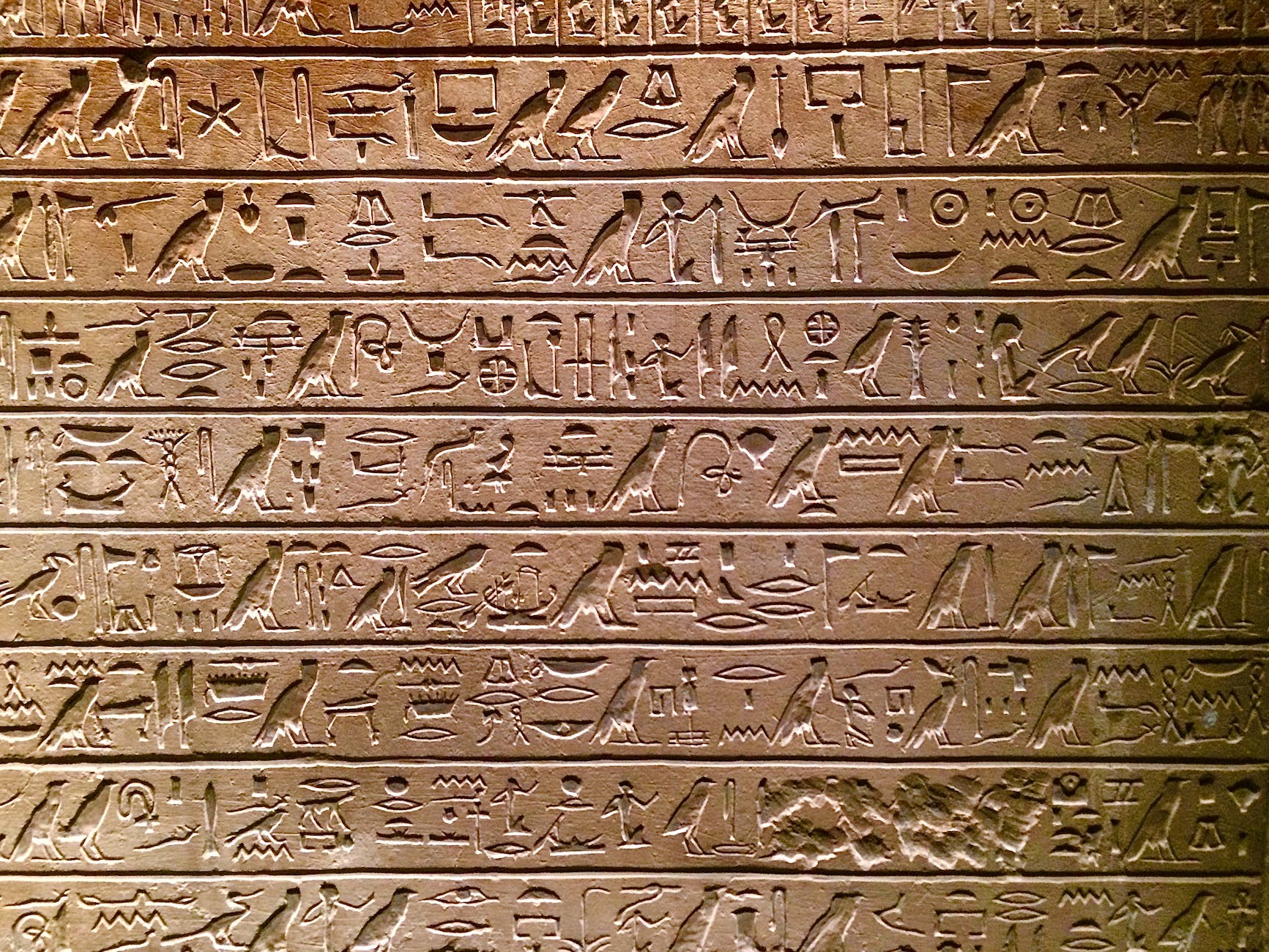
John Anthony West supports Donnelly’s suggestion when he says: The whole of Egyptian civilization was based upon a complete and precise understanding of universal laws. Moreover, every aspect of Egyptian knowledge seems to have been complete at the very beginning. The sciences, artistic and architectural techniques and the hieroglyphic system show virtually no sign of a period of ‘development’; indeed, many of the achievements of the earliest dynasties were never surpassed or even equaled later on. This astonishing fact is readily admitted by orthodox Egyptologists, but the magnitude of the mystery it poses is skillfully understated, while its many implications go unmentioned’. In Egypt everything was there right at the start.
West argues that ‘Egyptian science, medicine, mathematics and astronomy were all of an exponentially higher order of refinement and sophistication than modern scholars will acknowledge’.
Thoth

Let us now turn to god Thoth or Taaut, as we have heard above, who was the god of a foreign country, and who invented letters, and was again called At-hothes. But let us start from the beginning. The story of the creation shows that there was an original race of men at the beginning of Chaldean history, a dark race, who were called Ad-mi or Ad-ami.
According to the Phoenicians, Donnelly (180-181), the Egyptians derived their civilization from Atlantis, and that Misor gave birth to Taaut, the god of letters, the inventor of the alphabets, and Taaut became Thoth, the god of history of the Egyptians. Thoth was then instructed to take the sons of the Dweller (Sons of Atlantis) to Egypt in his spaceship which today lies buried beneath the Sphinx. The ‘sons of Atlantis’ were ‘gods’. So, the dark race referred above must have been in Atlantis, and the Ad-mi or Ad-ami later changed to Adam, as we find it in the Bible. Thoth, the Atlantean, therefore belonged to this ‘dark race’.
According to the Bible, the Egyptians were descendants of Ham, who was one of the three sons of Noah who escaped from the Deluge, which destroyed the Atlantis. The Egyptians were the only people of antiquity who were well-informed as to the history of Atlantis, says Donnelly.
But really, who is Thoth?
Thoth was an Egyptian god who was best known as a god of writing and wisdom, a lunar deity, and vizier of the gods, but was also a cosmic deity, creator god, and warrior. Being one of the oldest deities of the Egyptian pantheon. He is attested in many sources from the earliest periods of Egyptian history up to the Roman Period. The etymology of his name remains unexplained, possibly due to the name’s antiquity. Perhaps it is his age as a divine figure that led to a rather confusing mythology with a series of contradicting traditions concerning his descent and his reputation as a benevolent versus atrocious or mistrusted deity. Under the influence of Hellenism, he transformed into Hermes Trismegistos in Roman times and lived on as such well into the European renaissance.
He was a descendant of Noah, as we find him in the Bible. He was related to Ham, who is regarded as the father of the African human race.
According to Scott who edited Thoth’s book, the Corpus Hermeticum, says “Hermes was a man like you and me – a man who lived in Egypt a very long time ago, in the time of King Ammon. But he was a man who attained to gnosis (that is to say, knowledge of God, but a kind of knowledge that involves union with God; and he was the first and greatest teacher of [1]gnosis. He died, as other men die, and after death he became a god – just as you and I also, if we attain to gnosis, will become gods after our deaths. But in the dialogues which I and others like to write, and in which we make Hermes speak as teacher, we represent him as talking to his pupils at the time when he was living on earth; and at that time he was a man”.
Thoth, as we have hinted above, is an Atlantean Priest-King who has ruled ancient Egypt for more than 16,000 years. With the sinking of his land, Atlantis, he went to Egypt where he established his colony.
It is Thoth who built the Great Pyramid of Giza, not Cheops. As Hermes in his third incarnation, the Thrice Born, he wrote the Emerald Tablets which became the basis for the ancient Mysteries. After he had gone, the tablets were left in the care of pyramid priests.

According to http://www.escholarship.org/help_copyright.html#reuse, the Egyptian god Thoth is best known as a god of writing and wisdom, a lunar deity, and vizier of the gods, but was also a cosmic deity, creator god, and warrior. Being one of the oldest deities of the Egyptian pantheon, he is attested in many sources from the earliest periods of Egyptian history up to the Roman Period. The etymology of his name remains unexplained, possibly due to the name’s antiquity. Perhaps it is his age as a divine figure that led to a rather confusing mythology with a series of contradicting traditions concerning his descent and his reputation as a benevolent versus atrocious or mistrusted deity. Under the influence of Hellenism, he transformed into Hermes Trismegistus in Roman times and lived on as such well into the European renaissance.
He is usually termed “god of wisdom,” “scribal god” or “divine scribe,” as well as “lunar deity” or “divine vizier.” These functions set Thoth apart from most other gods and thus may be regarded as typical for him, but at the same time they are reductionist. Thoth is attested from the earliest historical periods onwards: he plays a prominent role in the oldest religious texts of Egypt, the Pyramid Texts, and continues to appear almost everywhere in Egypt up to the end of Egyptian religion some 4000 years later (Budde et al. 2002), transforming into the Hermes Trismegistus of late antiquity, and living on as such well into the European renaissance (Fowden 1993; Stadler 2009: 1 notes 2, 34 – 35, for further references). Throughout this long period the god is overwhelmingly present in a vast body of documentation that yields an extraordinarily colorful picture of the god’s nature and functions within the Egyptian pantheon. The more data and sources are collected the more Thoth’s picture becomes blurred and it seems that he embodies almost every possible aspect one could imagine a god to have within Egyptian mythology: in addition to the characterizations mentioned above, he is found acting as a cosmic deity.
Initially Thoth was the Lord Khem or ruler of ancient Egypt. He is the writer of Corpus Hermeticum, which consisted of 42 books, and was the scribe of the Egyptian gods. He was a magician, philosopher, physician, etc. He knew everything because he was the one who could communicate with God. He ruled Egypt for more than 16 000 years. He built the Pyramid of Giza using the crew he came with from Atlantis. He was a divine teacher who helped to heal the sick, physically and spiritually.
Thoth has always been said to have the revealed knowledge of God prior to Jesus, prior to Moses and all of the Hebrew prophets, hence to have been even closer in some sense to the divine revelation of God, and definitely much more knowledgeable than the Hebrews.Pythagoras and Plato and many other Greek philosophers got their wisdom from Thoth. He taught other priests of Egypt to further teach all other races of humanity about how great the Lord is.
His books were kept very hidden along the Nile guarded by animals, and could not be accessed to everybody except the Egyptian priests.
One of his (Thoth) prophecies on ancient Egypt went like this:
This land and region will be filled with foreigners; not only will men neglect the service of the gods, but … ; and Egypt will be occupied by Scythians or Indians or by some such race from the barbarian countries thereabout. In that day will our most holy land, this land of shrines and temples, be filled with funerals and corpses. To thee, most holy Nile, I cry, to thee I foretell that which shall be; swollen with torrents of blood, thou wilt rise to the level of thy banks, and thy sacred waves will be not only stained, but utterly fouled with gore.
…Egypt herself will have yet more to suffer; she will fall into a far more piteous plight, and will be infected with yet more, grievous plagues; and this land, which once was holy, a land which loved the gods, and wherein alone, in reward for her devotion, the gods deigned to sojourn upon earth, a land which was the teacher of mankind in holiness and piety, this land will go beyond all in cruel deed (Corpus Hemerticum).
In ‘The Ancient Secret of the Flower of Life’ we learn that when Thoth was still in Atlantis, he was called Arlich Vomalites, and was given the title of Chiquetet, which means the seeker of wisdom. After Atlantis sank, he, together with other advanced beings had to go somewhere to reestablish civilization. When Egypt began to come to life, he stepped forward and called himself ‘Thoth’. Both the Emerald Tablet and the Ancient Secret of the flower of Life are of the same opinion about Thoth.
Thoth, Thrice the Great, never died, but simple disappeared, and it is believed that God took him away.
So, Who Built the Great Pyramid of Giza and Sphinx?
In his wonderful book, “The Land of Osiris”, Stephen Mehler tells us that the man who originated the discipline of Khemitology, Abyd’l Hakim Awyan had this to say: ‘The sophisticated civilization that lived in Khemit from 10,000 to 65,000 years or more ago, whose self awareness and deep resonance with nature enabled them to develop devices and advanced technologies that mystify us today. Much of our continuing research is focused on the implications of the evidence that the Kemets left behind for us to discover. The ancients (all over the world) built many powerful and enigmatic structures, utilizing the elements from their environment, combining them with the energy naturally emanating from the earth’s ley lines, and constructed them in a fabric of sacred geometry reflecting the very cosmology and energetic make-up of our holographic universe’.
What is the Great Pyramid of Giza?Ask that basic question of a traditional Egyptologist, and you get the basic, traditional answer: a fancy tombstone for a self-important pharaoh of the Old Kingdom. This, Egyptologists argue, is the sole finding based on the data, and the only deduction supported by science.
By implication, anyone who dissents from this point of view is unscientific and woolly-minded-a believer in magic and ghosts. Indeed, some of the unconventional ideas about the Great Pyramid do have a spectacularly fabulous ring to them. Yet from beneath the obvious terms of this controversy, a deeper, more significant question arises: how is it that the Great Pyramid exercises such a gripping hold on the human psyche?
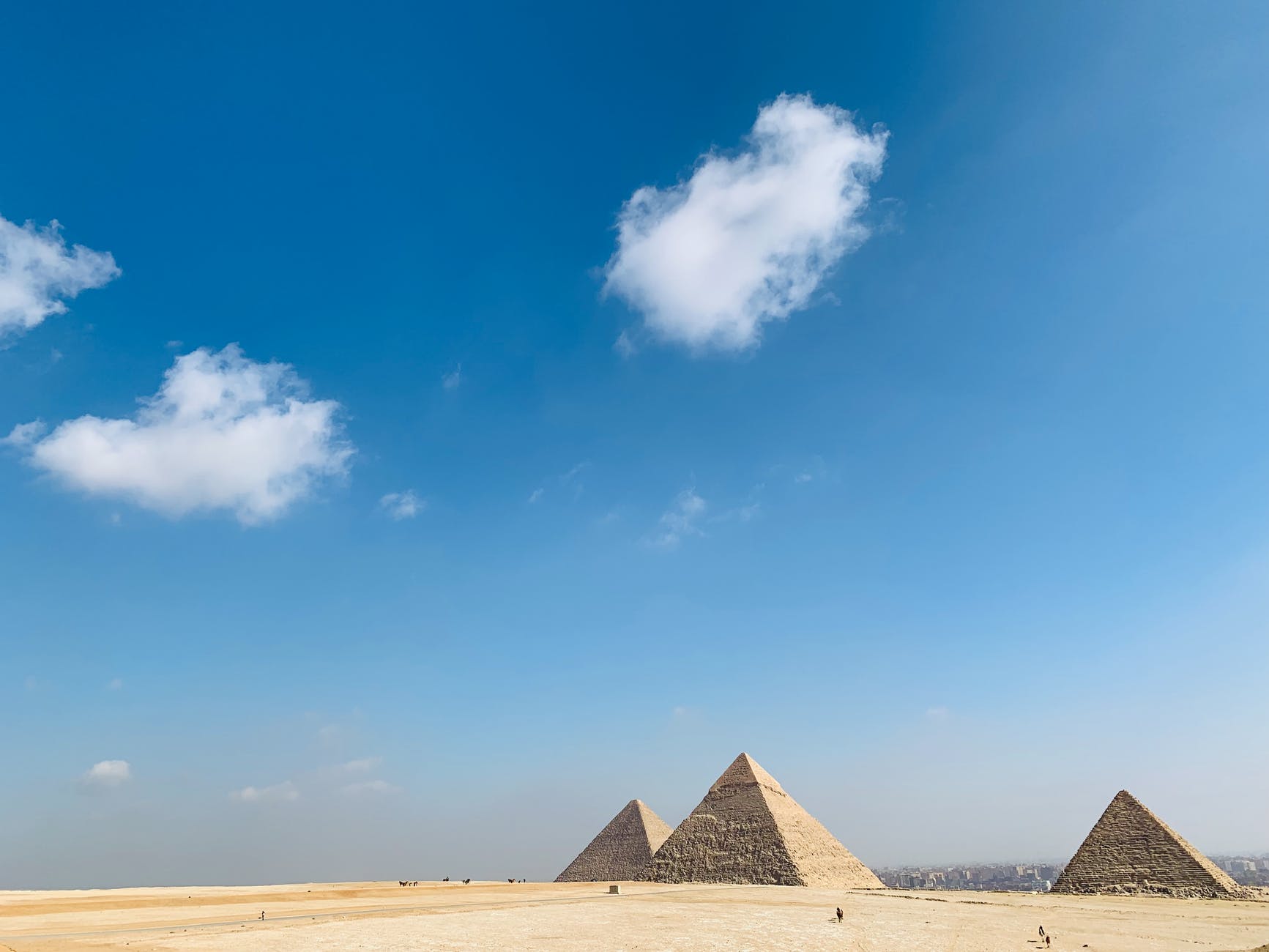
In Pyramid Quest, Robert Schoch and Robert McNally use the rigorous intellectual analysis of scientific inquiry to investigate what we know about the Great Pyramid, and develop a stunning hypothesis: This ancient monument is the strongest proof yet that civilization began thousands of years earlier than is generally thought, extending far back into a little-known time. In tracing that story, we come to understand not only the Great Pyramid but also our own origins as civilized beings.
The answer to this question, which I think is a very fundamental one, comes from the conversation between Pythagoras and Hamilcar about the essence of a pyramid. Pythagoras, who was a student of Thoth in Egypt, answered Hamilcar in these terms: a pyramid is a temple for the initiation of the soul. The image of the pyramid allows one to penetrate into inner hidden chambers of the Divine Consciousness. Such a pyramid should be immense! When the consciousness consisting of Light in the form of a pyramid rises above the surface of the Earth, it is possible, having filled the top part of this form, to plunge through it into the Depths. It is necessary to perform this in the Divine subtlety. In such a way, it is possible to grow the soul to the volumes comparable to at least the size of our planet. Moreover, it is possible to perceive the Divine Creative Fire under the base of such a pyramid, and to dissolve in It by the soul, feeling Its Boundlessness!
The Giza Pyramids and the Sphinx (who we call Tefnut), argues Hakim Awyan, are far more ancient than our text books tell us! The ancient pyramids were not created to be tombs! The pyramids, temples and monuments were originally built and used as energy devices for transmitting and receiving energy and/or signals, as consciousness raising devices, and possibly as interdimensional or inter-galactic communication or traveling devices. A complex architecture of the natural elements of energetic rock, combined with the frequencies of sound, and varying temperatures of running water, all effectively worked together to generate power. The various Pyramid, or Per Neter complexes here were networked in a dynamic design of underground tunnels and shafts implying an even wider scope of purpose and capability.
From the Emerald Tablet, which was written by Thoth, tells us that there is ‘a passage to Amenti from beneath the Great Pyramid. The pyramid he built using the power that overcomes Earth force (gravity). This passage to the halls of Amenti reaches almost to the summit of the pyramid. At the apex he placed a crystal that drew the force from out of the ether.
So, Thoth posits here unequivocally that he built the Pyramid of Giza, and what about Khufu. What does he say, or what is said about him regarding the Pyramid of Giza and Sphinx?
Khufu or Cheops
Khufu (aka Cheops) ruled during the Old Kingdom and was the second pharaoh of the fourth dynasty of kings, whilst the Pyramid of Giza and Sphinx were far before any dynasties of ancient Egypt. He succeeded his father, Pharaoh Snefru, and ruled from 2589 BC to 2566 BC.
Known by many names, Khufu, whose full name was Khnum-Khufwy. Khnum was the ancient Egyptian ram-headed god of procreation, water and fertility. The Greeks gave Khufu the name “Cheops” and he is probably best known throughout history by this name.
Khufu’s father, Snefru, first king of the 4th dynasty, was granted kingship through marriage, instead of like most kings who were declared kingship through birthright. Khufu’s mother was Queen Hetepheres, who was likely Snefru’s half sister. Khufu married Queen Meritites and Queen Henutsen. It was Queen Merities (his principal wife) who gave birth to Khufu’s heir to the throne, Prince Kawab. However, Prince Kawab died before Khufu and was never able to assume his kingship.
Thousands of years after his reign, Khufu is widely believed to have been a cruel king to the Egyptian people, and that he built the Pyramid of Giza. However, there is not a lot of evidence to support this. Rumours have existed for millennia that the king forced people as slaves to build his pyramid (The Great Pyramid of Giza) but there is evidence to suggest that the laborers not only called themselves “friends of Khufu” but they were also paid for their work. It is widely believed, however, that Khufu exchanged the life of a criminal to allow a magician to test his skills of resurrection. It is because of these rumours that Khufu is not just a famous pharaoh, but an infamous one, as well. He believed the Great Pyramid was his stairway to heaven. So, Khufu found the Great Pyramid of Giza there in Egypt. He didn’t built it, but he made it a point that it was looked after very well. Clearly, looking after it well, using his labourers, must have been interpreted to mean that he built it.
So, really there is little that is there in the literature, and one has never come across anything that suggests ‘Cheops built the Pyramid of Giza’.
Sphinx
For example, Colin Wilson in his From Atlantis to the Sphinx (1996) posits that some geologists from Geological Society of America Convention insist that the Sphinx could not be much older because people who lived there earlier could not have built it. On the other hand, scientists who conducted a series of unprecedented studies at the Giza site said their evidence shows that the Sphinx was already there long before Kafre came to power. Evidence suggests that Kafre simply refurbished the Sphinx. It is assumed that the Sphinx dates back to between 5000 BC and 7000 BC. “That would make it double the age of the Great Pyramid and make it the oldest monument in Egypt”, said Robert Schoch quoted by Wilson. Therefore, it would be wrong, again, to say the Pyramid of Giza was built by Kafre.
Slowly but surely the veil that has hung over the land of Egypt and it’s ancient past is being pulled back. Sensational archaeological and geological discoveries in this land prove that mainstream science has misled us for over a century. We have all been deluded by the rubbish they taught and continue to teach in schools about Egypt’s origin, it’s anthropology, archaeology and literature. Eventually we must be provided with a clear explanation of how highly advanced construction and machining techniques could be undertaken in an ancient society. Stephen Mehler’s book “The Land of Osiris” uncovered a new Egyptian paradigm for all of us.
In short (Collin Wilson., Atlantis to the Sphinx), both the Sphinx and a pyramid were already there on the Giza plateau at least a century or so before Cheops (Khufu) came to power. Wilson posits that Cheops only founded the Temple of Isis next to both the Sphinx and Giza Pyramid.
The nature of the Giza Pyramid
It is very clear that a highly advanced civilization existed in prehistory, and the obvious conclusion here is that the Giza Pyramid was a display of such ancient technology. Then, what was the power source that fuelled such a civilization?.
In a brilliant piece of reverse engineering based on twenty years of research, Dunn reveals that the Great Pyramid of Giza was actually a large acoustical device! By its size and dimensions, this crystal edifice created a harmonic resonance with the Earth and converted Earth’s vibrational energies to microwave radiation. Dunn shows how the pyramid’s numerous chambers and passageways were positioned with the deliberate precision to maximize its acoustical qualities.
So, it is wrong to claim that the Pyramid of Giza was built by slaves. Graham Hancock argues that ‘no slaves were ever involved in the construction of the Great Pyramid. As far as I know, there were no slaves in Old Kingdom Egypt whatsoever’. He continues and says: How do I think the pyramids were built? To be honest, I have no answer to that question. And anybody who tells you that he or she knows how the pyramids were built are not telling the truth, because we don’t know. The Great Pyramid contains a number of mysteries. The Great Pyramid first of all is very big. It weighs six million tons. We can calculate that from its mass. It weighs six million tons. Its footprint is 13 acres. It’s more than 750 feet along each side. It’s 481 feet tall. More than two-and-a-half-million individual blocks of stone were used in its construction.
Hancock argues further that the ‘Great Pyramid is locked in to the cardinal dimensions of our planet. The Great Pyramid is targeted on true north within three-sixtieths of a single degree. Now, no modern builder would create a large building and add onto his or her shoulders the additional burden of aligning it to true north within a fraction of a single degree—they just wouldn’t get it; they wouldn’t understand why it was important to do that. But something drove the builders of the Great Pyramid to go to a very great additional trouble not only to create this massive imposing monument but also to lock it on to true north’.
Hancock, in conclusion, emphasises that: ‘I don’t want to get too numerical or possibly even boring here, but if you take the height of the Great Pyramid and multiply it by 43,200, you get the polar radius of the earth. And if you measure the base perimeter of the Great Pyramid accurately and multiply that measurement by 43,200, you get the equatorial circumference of the earth. In other words, for thousands of years through times, through dark ages when human beings didn’t even know they lived on a planet, never mind its dimensions, that monument has encoded and speaks out the dimensions of our planet on a scale of one to forty-three thousand, two hundred. And the scale is not random. The number 43,200 is derived from a key motion of the earth, which is called the precession of the Earth’s axis. The earth wobbles on its axis very slowly at the rate of one degree every 72 years, and 43,200 is a multiple of 72.
So they’ve given us the dimensions of our planet on a scale defined by the planet itself. And that’s an incredibly clever thing to do. How on earth did they do it? Where did that knowledge come from? This is why I’m forced to consider the possibility of a lost civilization in the human story, concludes Hancock. Robert Schoch in his The Great Sphinx supports Hancock: there is evidence of high culture dating back to approximately 12,000 years ago.
Well, here is the truth, and Hancock is correct. We have just gathered, during this research, from A.H. Awyan’s Khemet School of Ancient Mysticism, particularly Patricia Awyan, his daughter, that according to the ingredients of his many lectures which are being put together into a book, not published yet, that ‘the Pyramid was constructed using spiritual technology of vibration and consciousness that activated weightlessness into blocks’. This means one could push a block of the Pyramid with his/her finger easily. Unbelievable!. So, this is the new version we have just unearthed, which indicates that God inspired the construction of both these structures.
What's Your Reaction?
Dr. Bhengu is an Independent Researcher on Afrikan philosophy, Afrikology and Egyptology. He is an established and experienced author, self-publisher and managing director of Phindela Publishing Group & Editor-in-Chief of INQABA Journal, a quarterly publication that specializes on Afrikology. He describes himself as an Afrikan of Nguni (Zulu) extraction, but then a global citizen. Black, but being in total fusion with the world, in sympathetic affinity with the Earth... “I am black not because of a curse, but because my skin has been able to capture all cosmic eluvia. I am truly a drop of the sun under the earth.” He says.










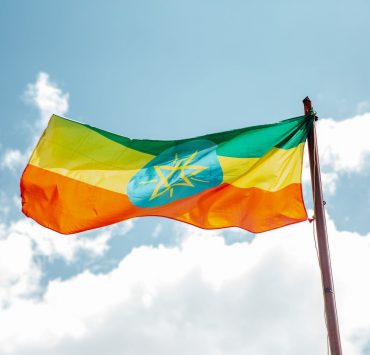




A very confusing article that will leave readers reeling with poor understanding.
Kemet (Ancient Egypt) is not a product of Atlantis. The facts of this assertion
lie in the abundance of evidence in Nubia and the Central Sahara from 9000
BCE. It is these two polities that created monumental art/buildings, writing, the
fundamentals of the techniques of painting and the technology in plant-based
colour that did not fade for thousands of years.
Nabta Playa was where the first astronomical megalthic structure, measuring
and following key points in the universe, was build 7500 BCE. It is also the
first example of agriculture.
Without Nubia and the Central Sahara there is no Kemet.
Thoth is not the Kemetan name for the netjer of wisdom and writing, but Djehuty.
Dj does not exist in Greek, so they substituted this with T and dropped the y.
Thank you, so glad to have your feedback. Please, if you have an article that sheds more light on this topic or others on Afrika do share we would be happy to publish them. Please send them to editor@msingiafrikamagazine.com